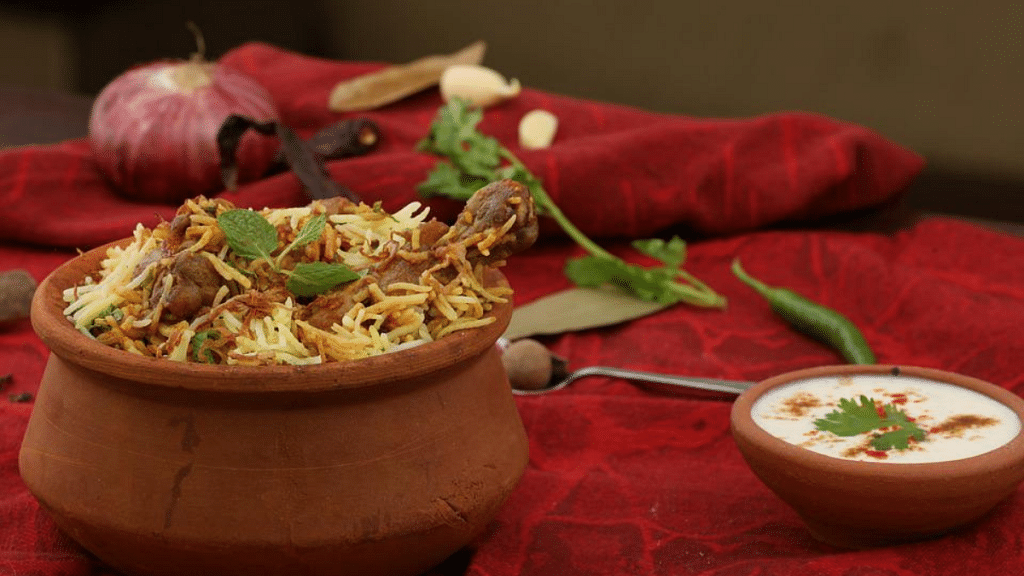New Delhi: Fork out some of your money and head to Matka Peer in Delhi, Begumpet in Hyderabad, Park Circus in Kolkata, or wherever you like your rice with saffron and meat, or its jackfruit equivalent preparation the most because basmati rice brand Daawat has decided to proclaim 3 July as World Biryani Day.
The brand announced the occasion via a YouTube promo featuring actor Bhupendra Jadawat. It was accompanied by a press release, with parent company LT Foods Ltd. CEO Ashwani Kumar Arora stating, “The love for biryani is truly universal, cutting across countries and cultures, transcending all age groups.”
Now, this is little more than a regular marketing ploy for Daawat to promote its new Biryani Kit on a day “by biryani, for biryani, of biryani”. It provides an occasion to briefly explore the dish’s cultural pervasiveness in this day and age, for good and ill.
Cutting across cultures
A big sign of the popularity of any product is the extent of its diversity. Very few savoury dishes are as regionalised or offer as much variety on a nationwide and global scale as the biryani. It ranks among the most ordered items on both Swiggy and Zomato as per the latest reports. It’s significant, given that many restaurants had to rebrand as purely cloud kitchens due to Covid.
Although it is said to have originated in Delhi in the 16th-century Mughal court, the Delhi biryani has historically been rivalled in quality or surpassed in popularity by other regional variants — be it the Hyderabadi, the Kolkata, the Chettinad or the Thalassery.
Part of the fun for many foodies is to get into endless debates about whose version is superior or unparalleled, with the others being tossed aside as fraudulent fakes, “unworthy of consumption”. The veg biryani, for all we know, is jocularly given the status of ‘pulao’, much to vegetarians’ spite. It’s often an amusing exercise and a break from the standard bickering over whose city or sports team is better.
Also read: ‘Historic hurt’ is a modern phrase. Muslims were integral to South Indian gods
Painting it political
As with many other culinary or cultural items with origins, real or perceived, in India’s Muslim community, the biryani has been maligned and demonised by people of a certain religious and political persuasion.
A little over two years ago, in the run-up to the Delhi elections, Uttar Pradesh chief minister Yogi Adityanath attempted to bat for his Bharatiya Janata Party colleague and Delhi CM candidate Manoj Tiwari by drawing a false dichotomy between bullets and biryani.
“We have been identifying every terrorist and feeding them goli instead of biryani,” Adityanath had proclaimed, in a thinly veiled jibe against both the Arvind Kejriwal-led Delhi government and the anti-CAA/NRC protesters demonstrating at Shaheen Bagh.
Adityanath’s remark was met with a notice issued by the Election Commission, and the BJP was soundly beaten as Kejriwal’s beloved aloo paratha “kept Delhi voters united”. But the damage was done — the wildly popular biryani was now sullied for electioneering purposes.
The dish may not receive the same amount of socio-political scrutiny as beef or halal food does, but the expanded generalisation of such levels of dubious accusations tied to eating habits is perhaps just a few election cycles away.
There is a need to sincerely educate people about the historical connections of biryani because, despite all the rivalries and regional variations, it bears repeating, again and again, that biryani is for everyone.
(Edited by Humra Laeeq)
